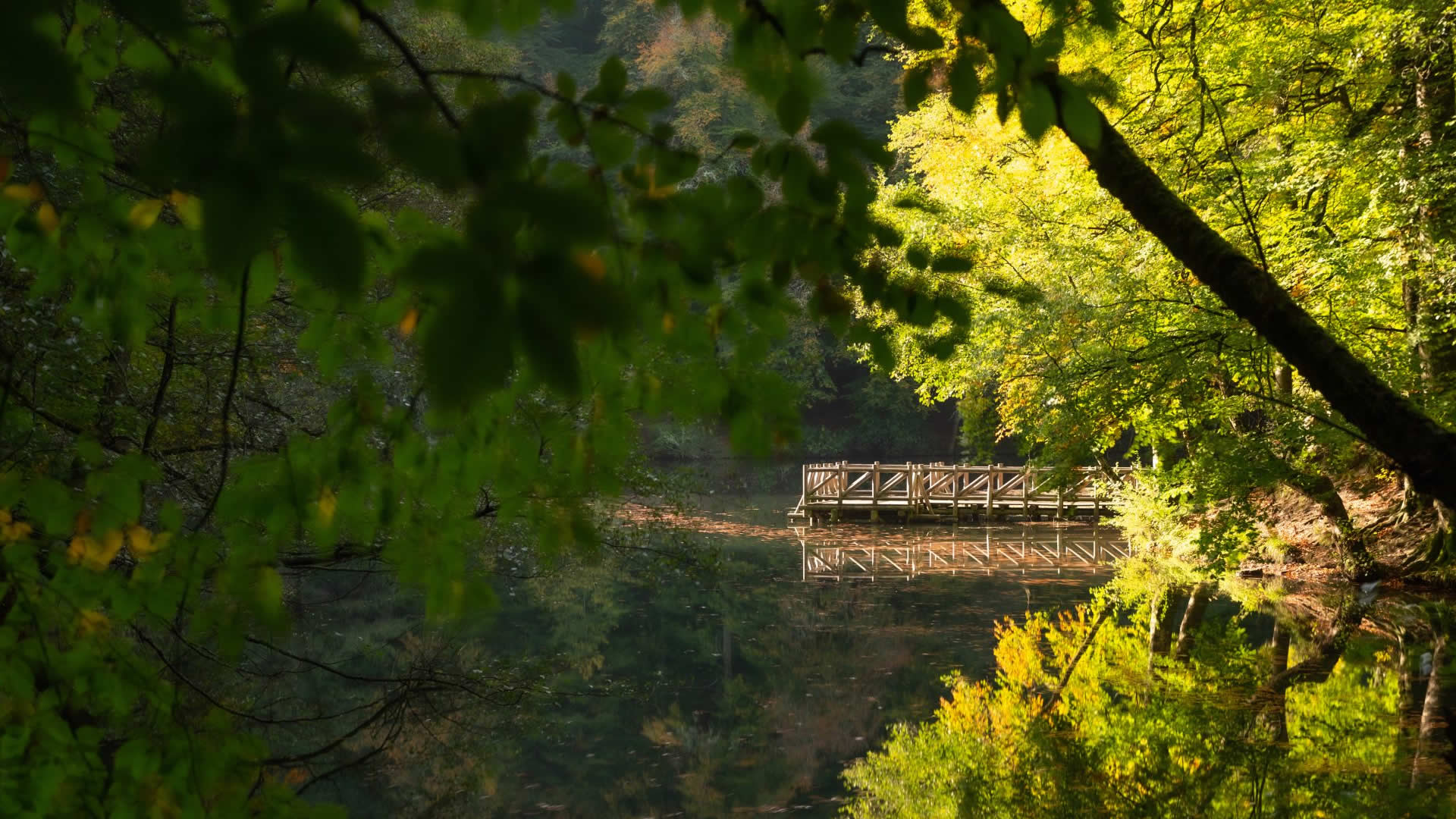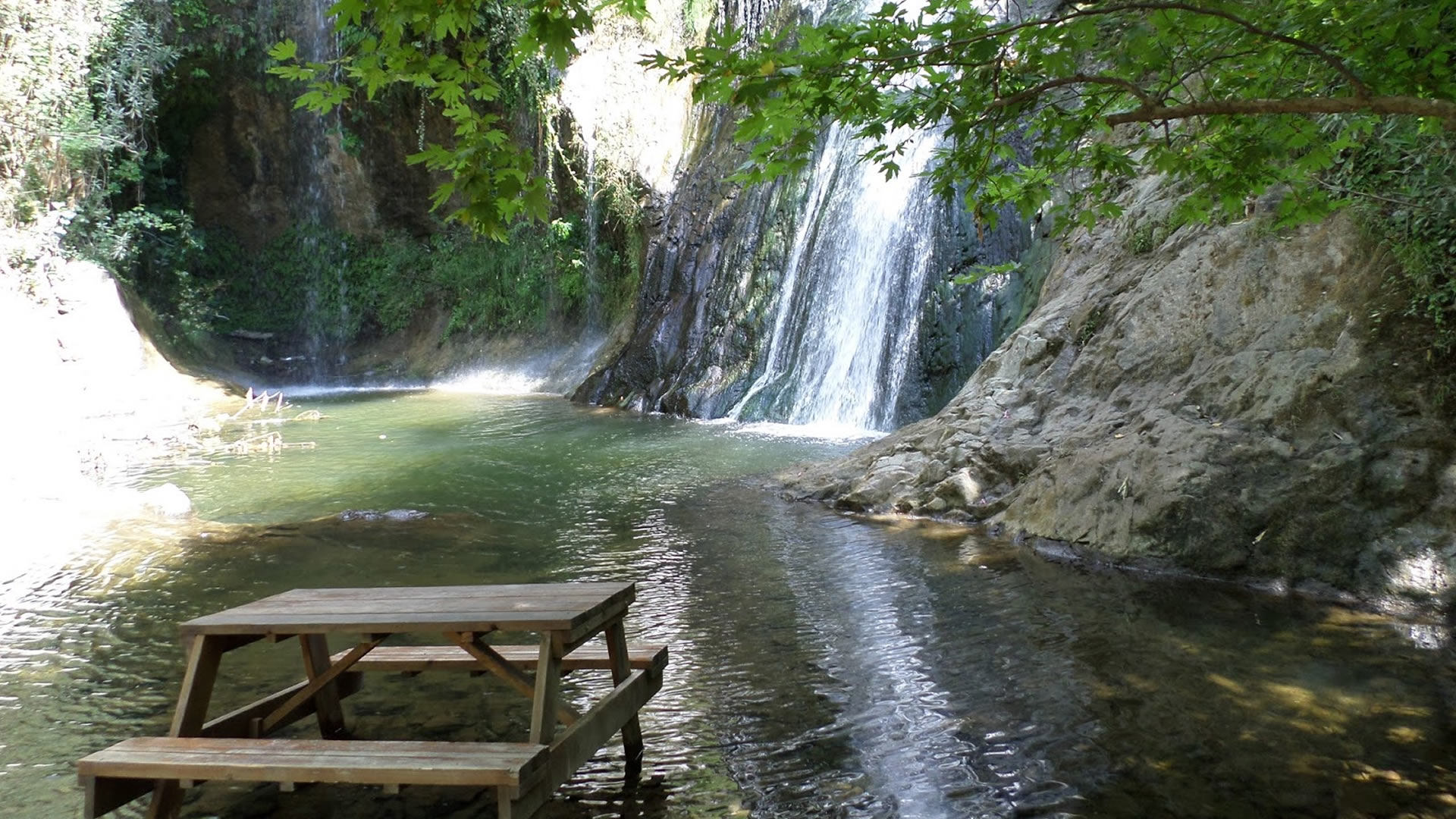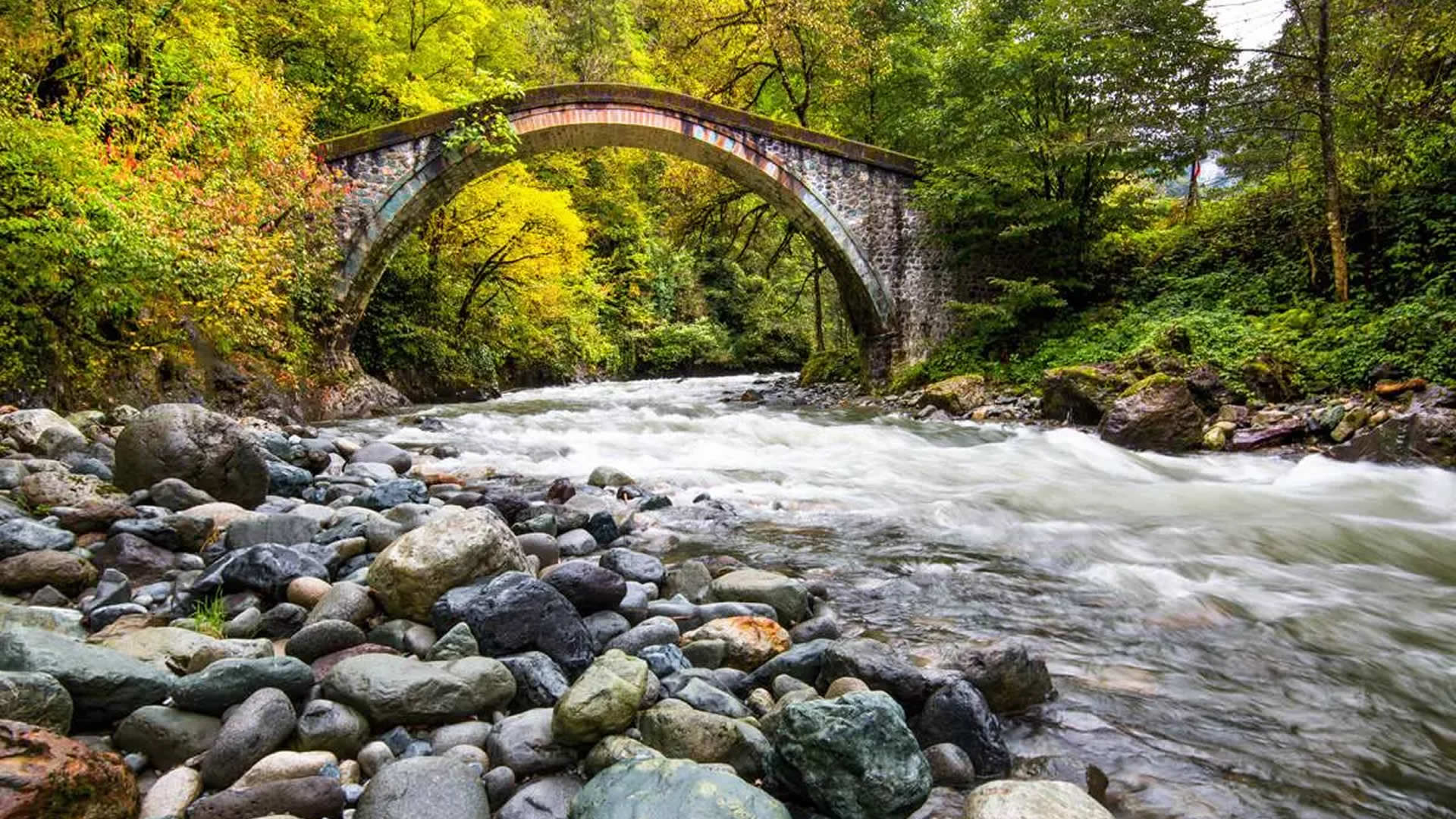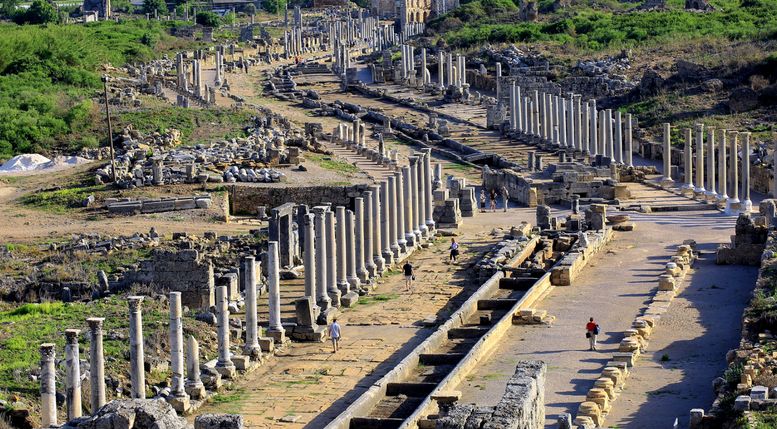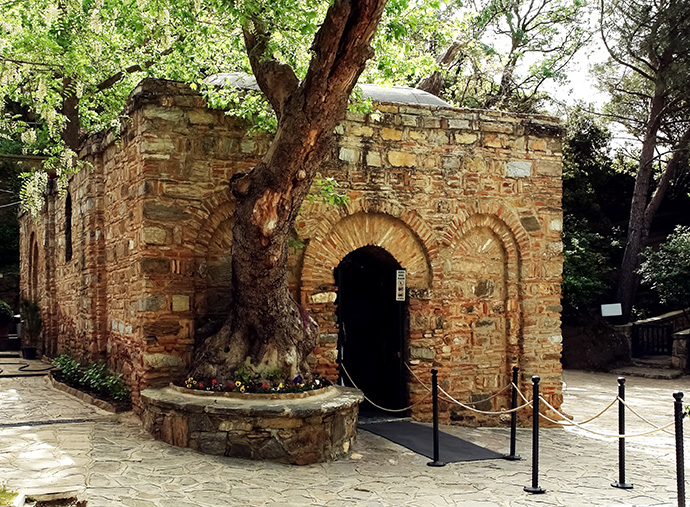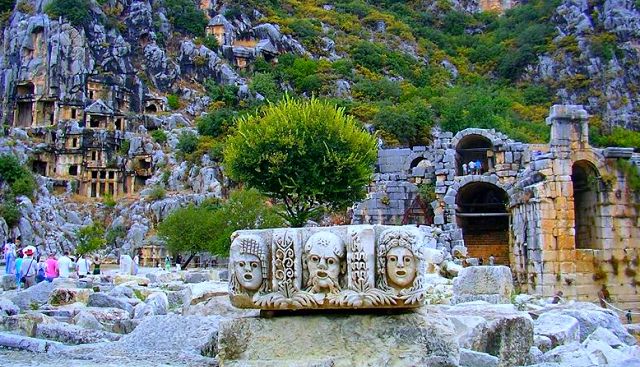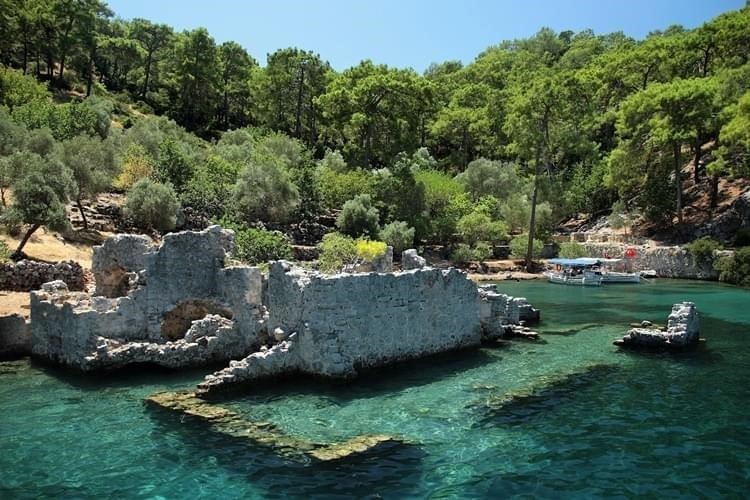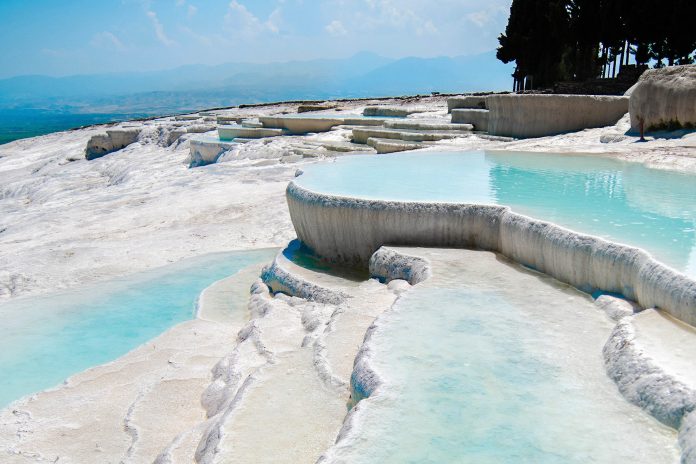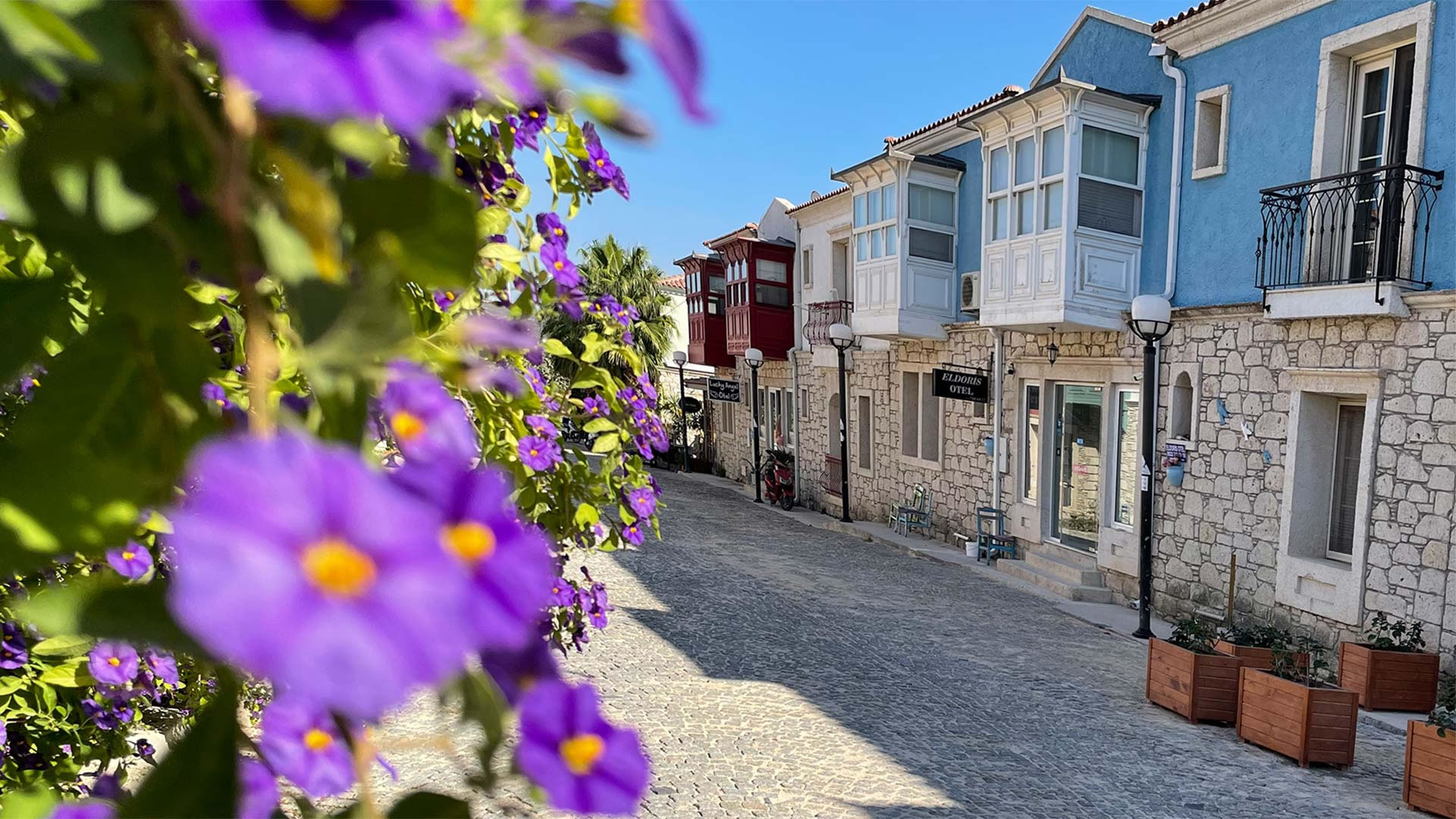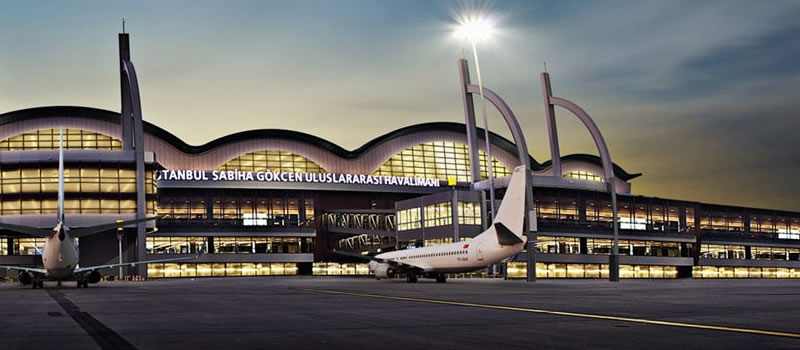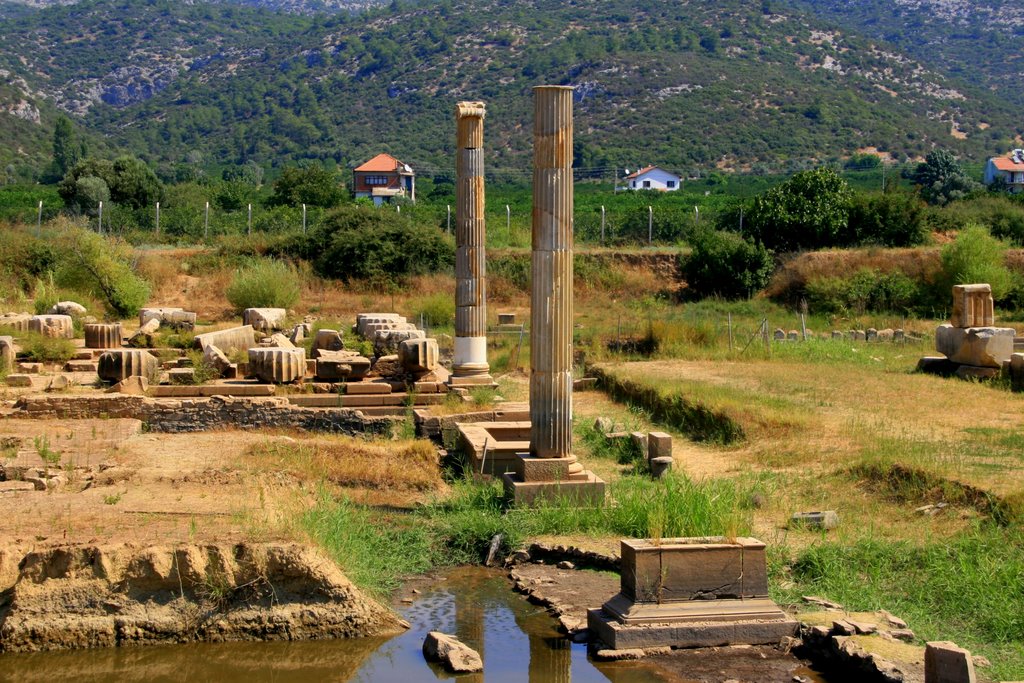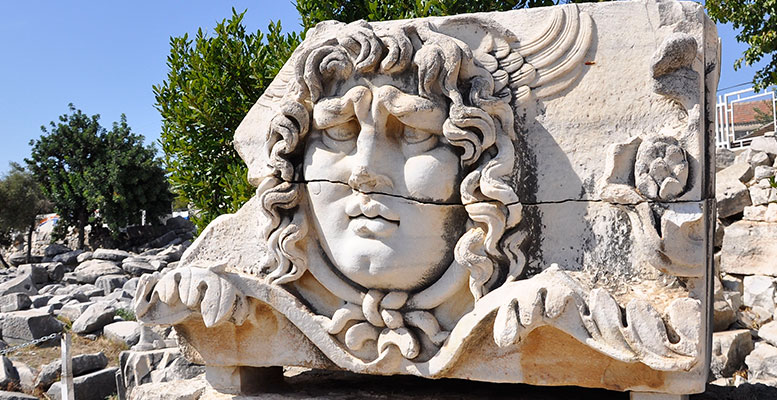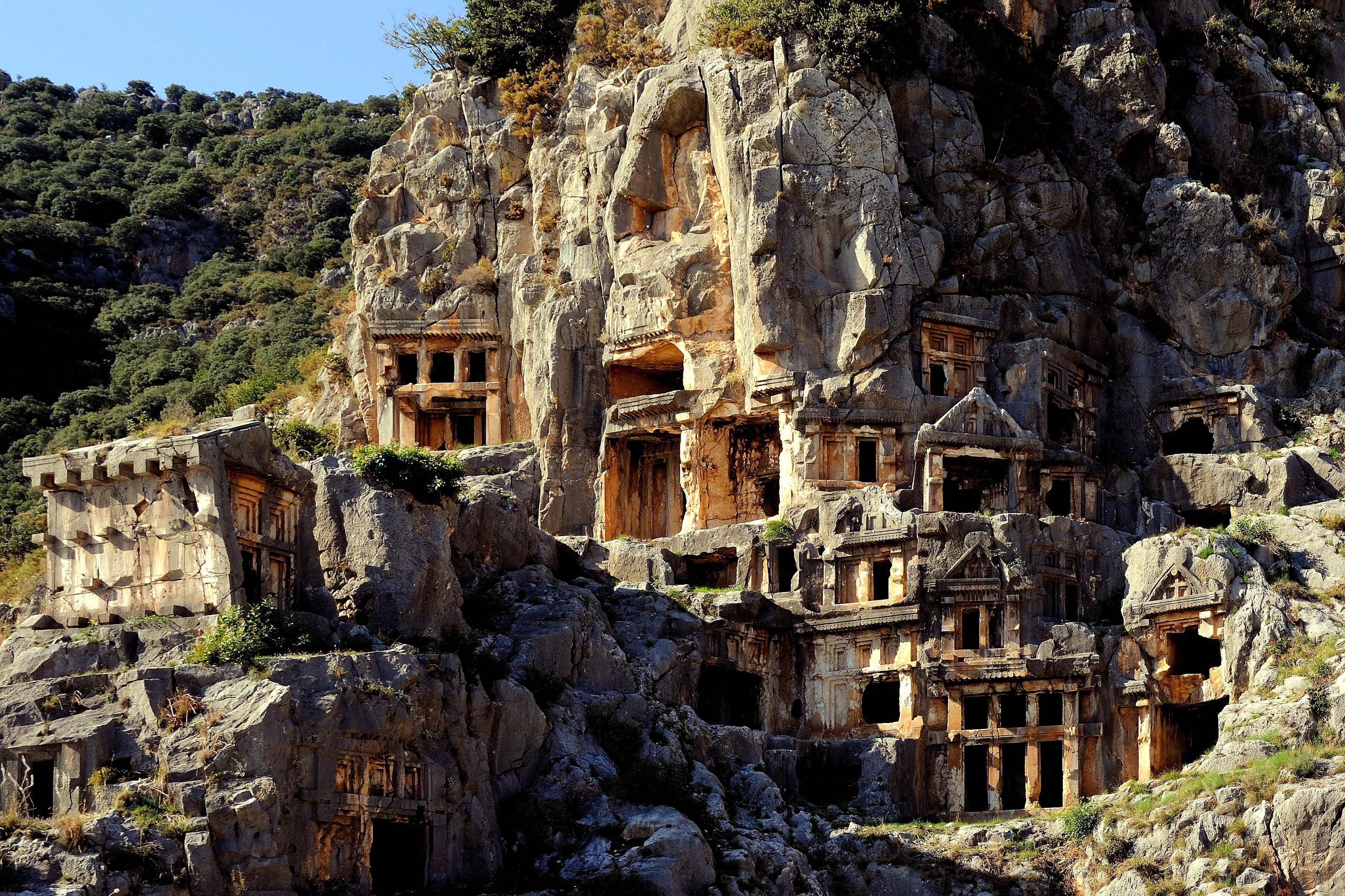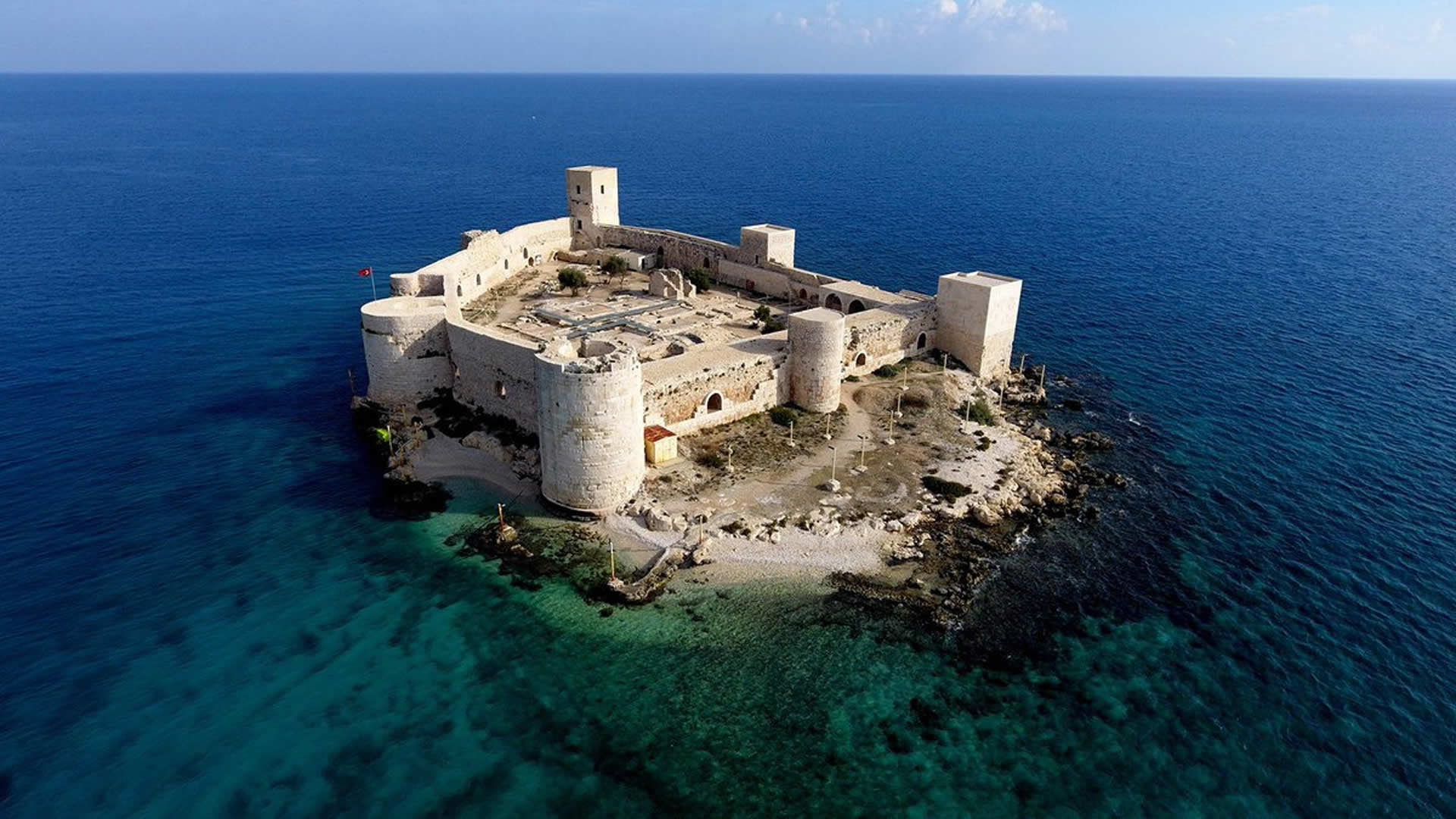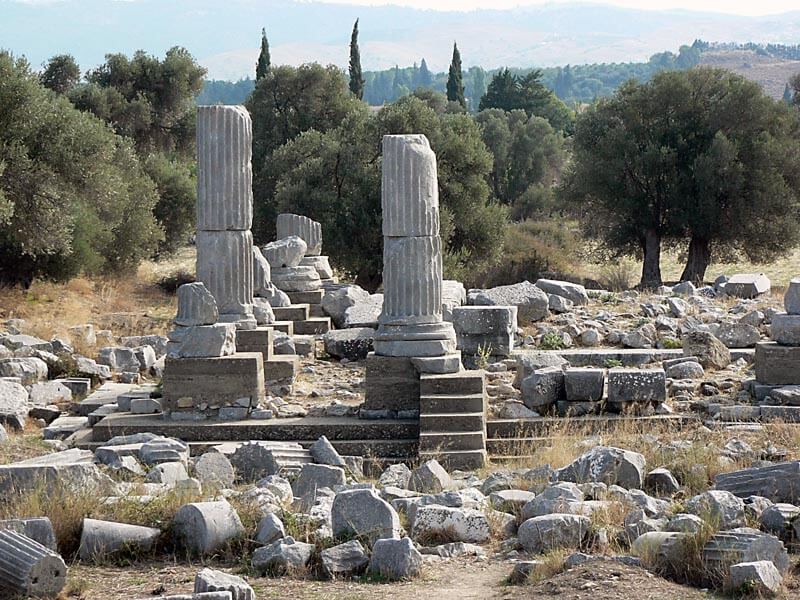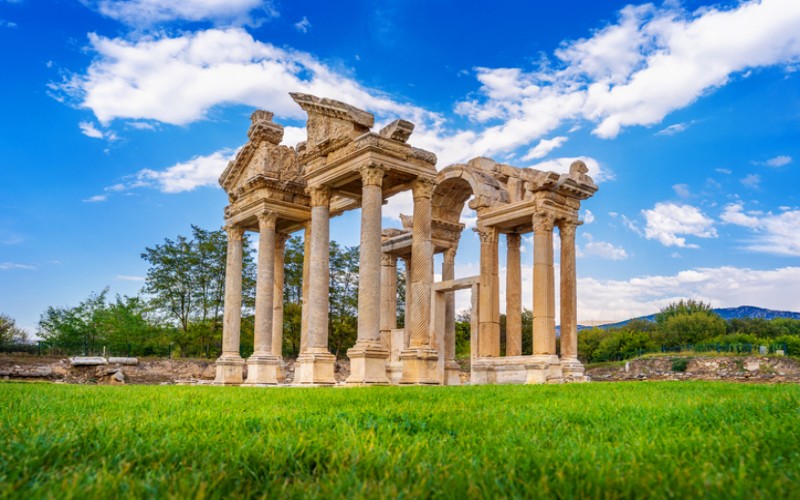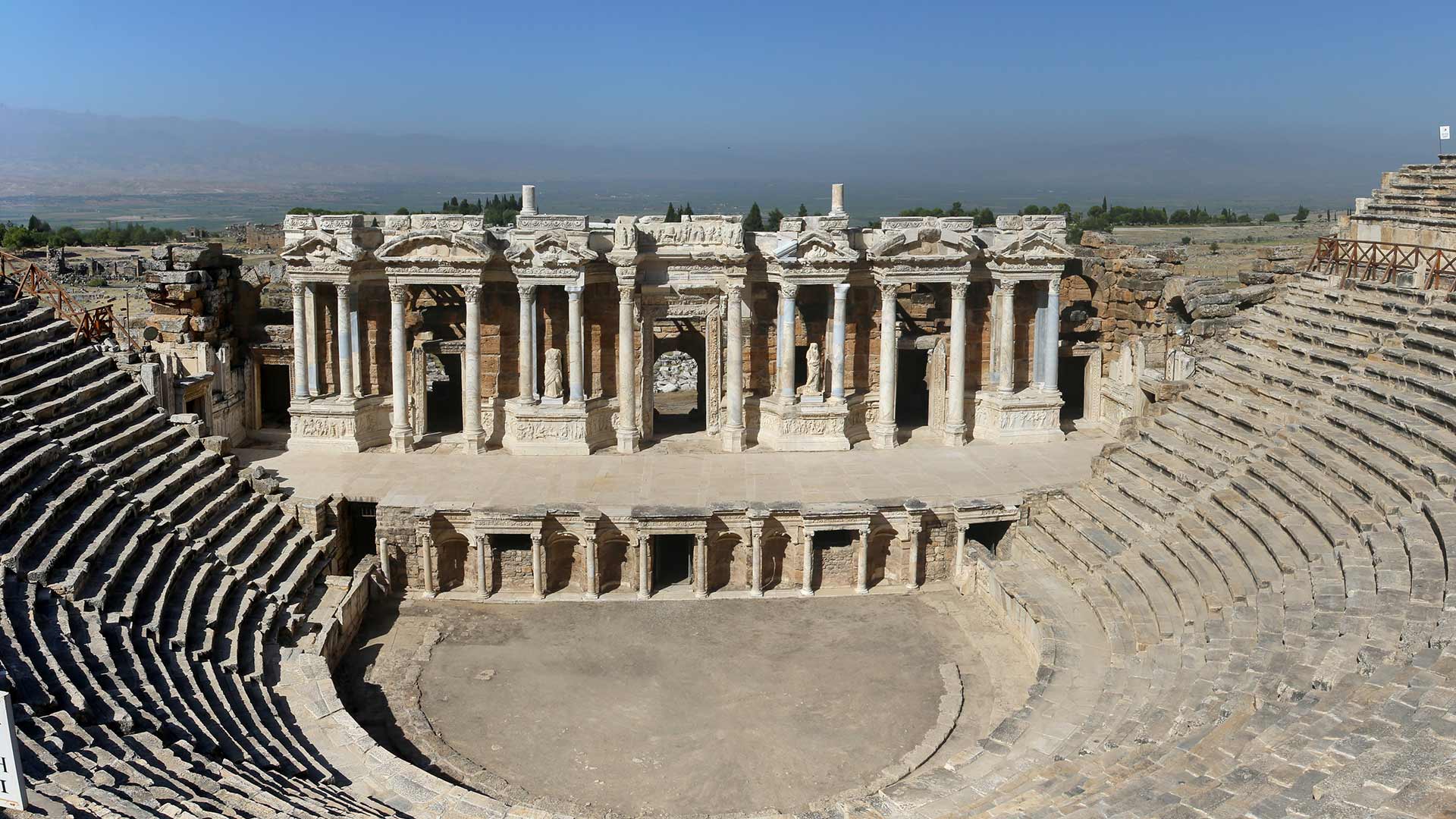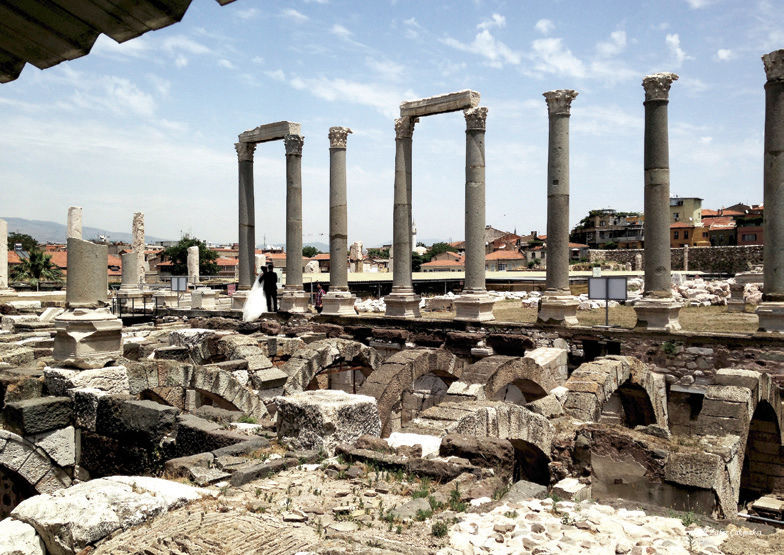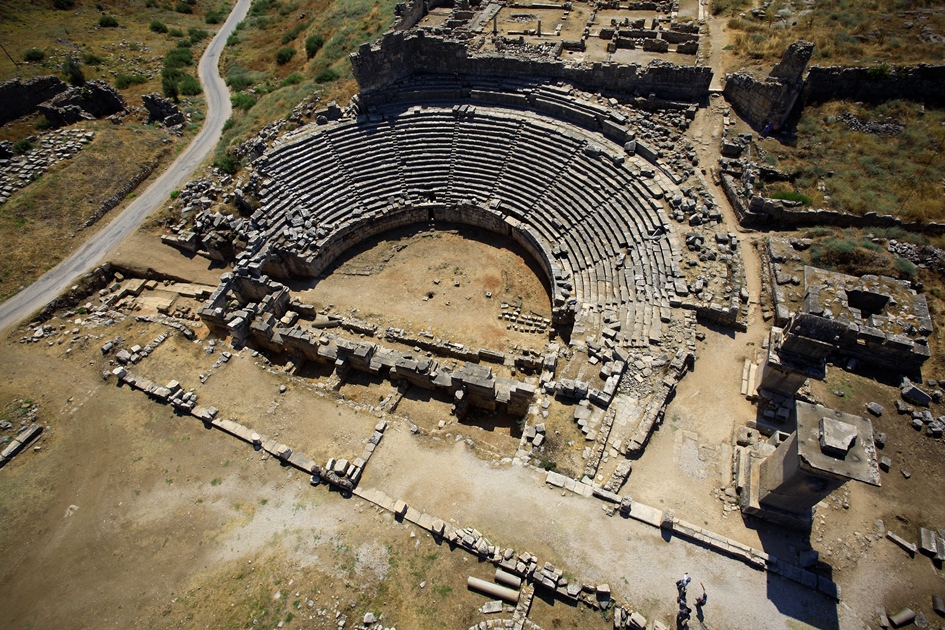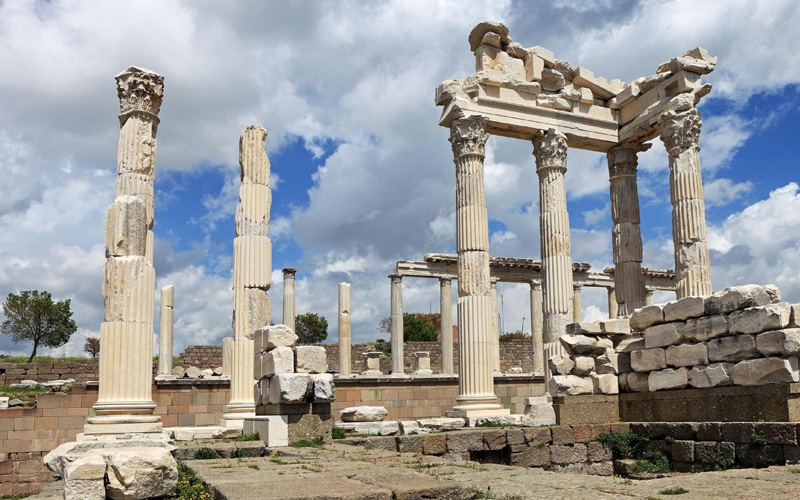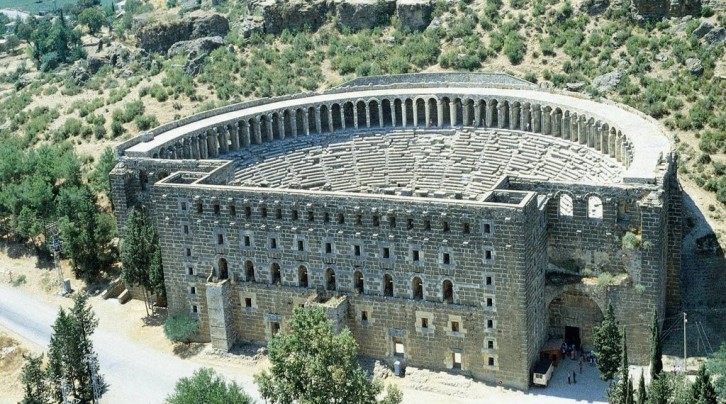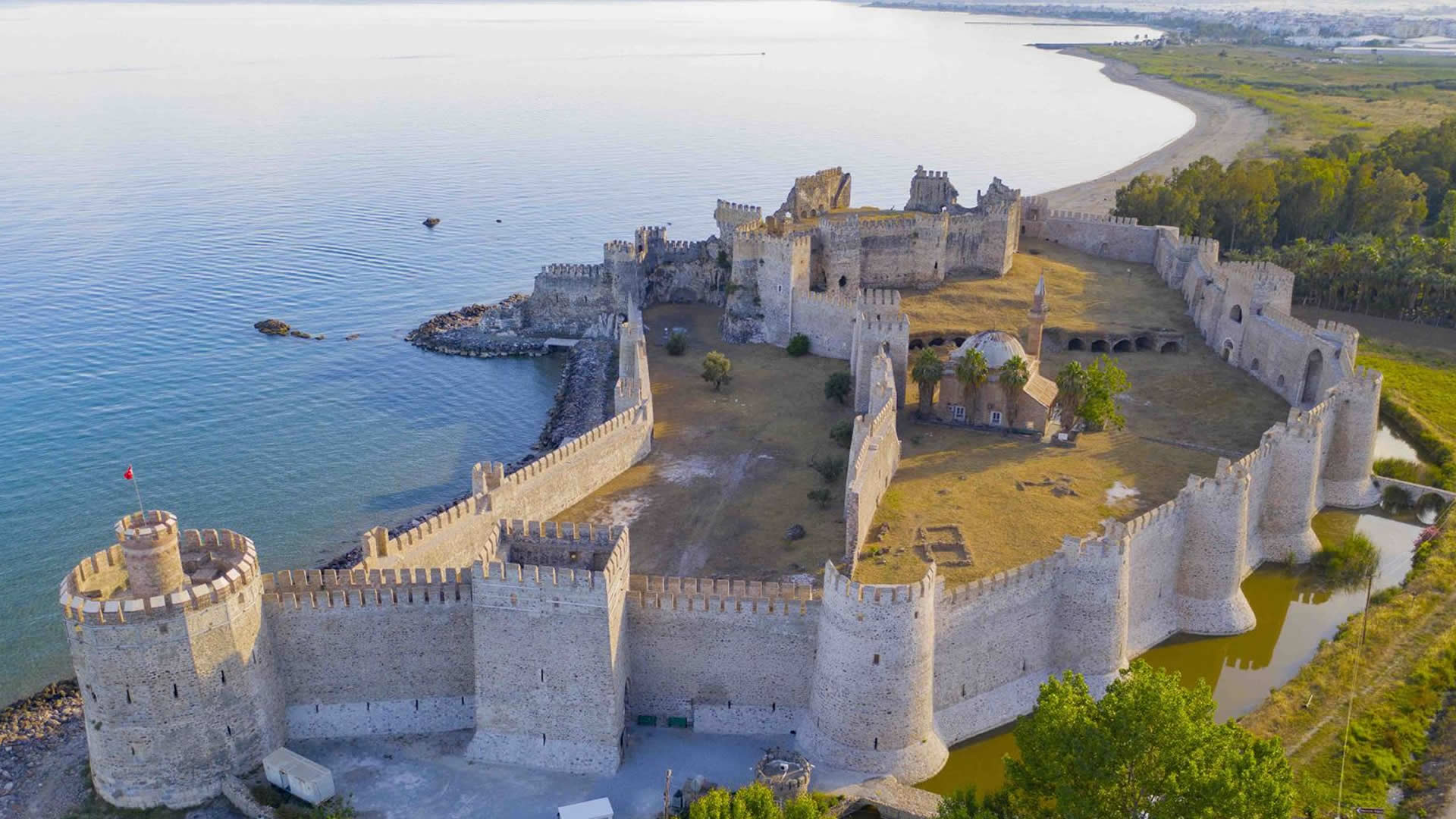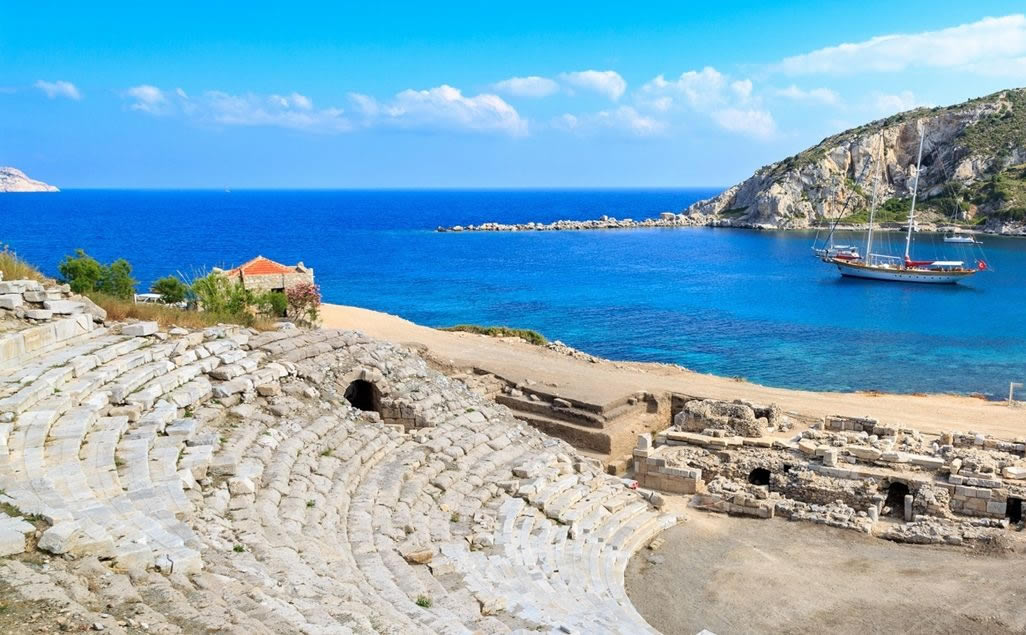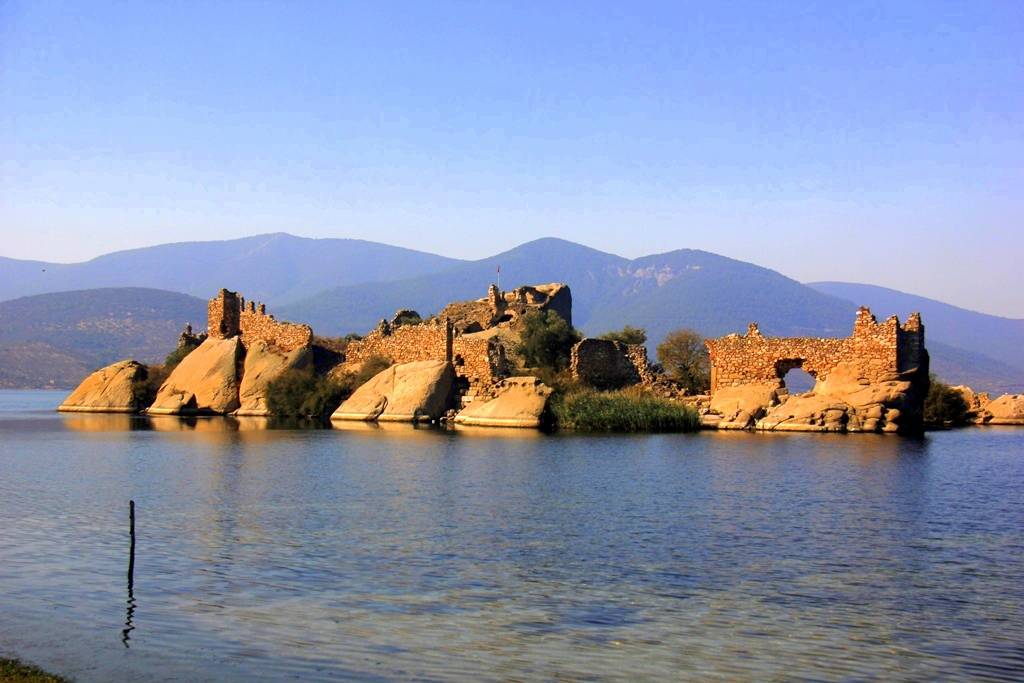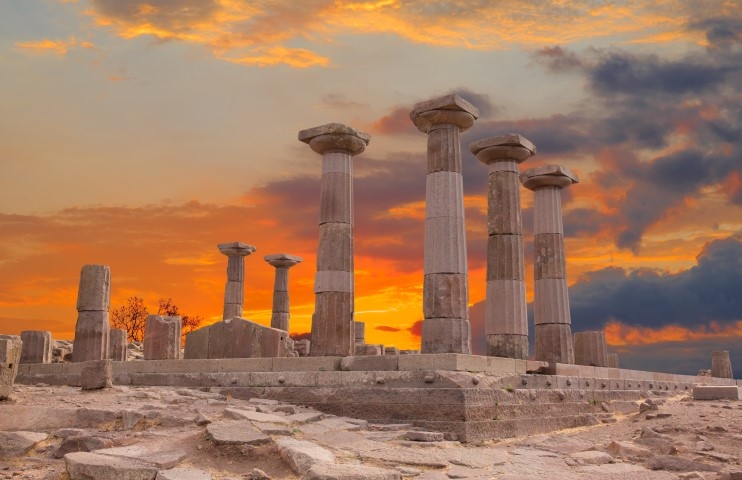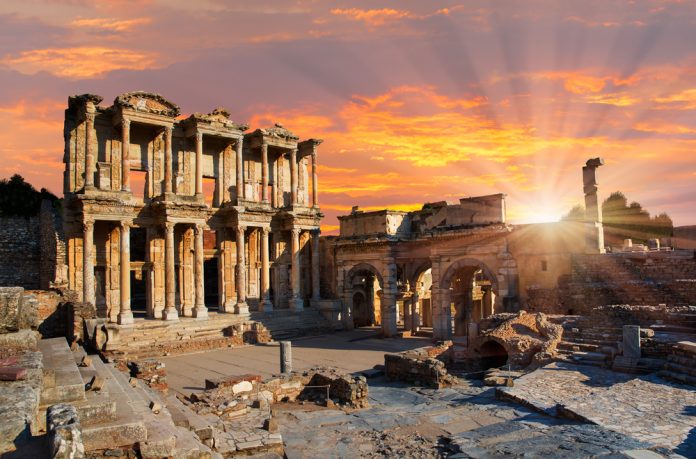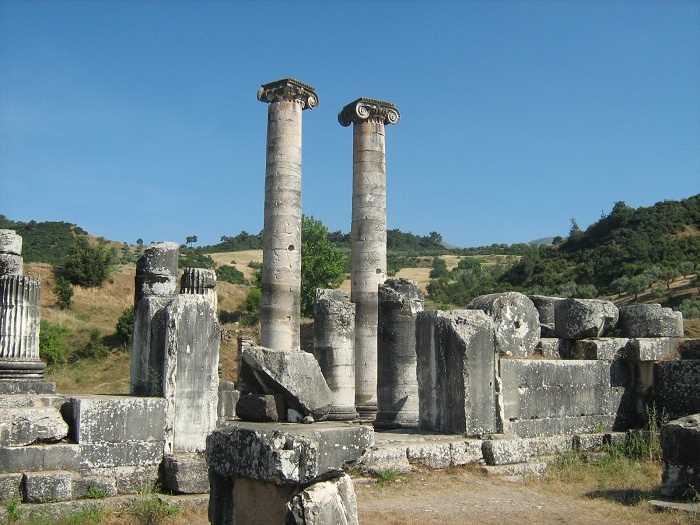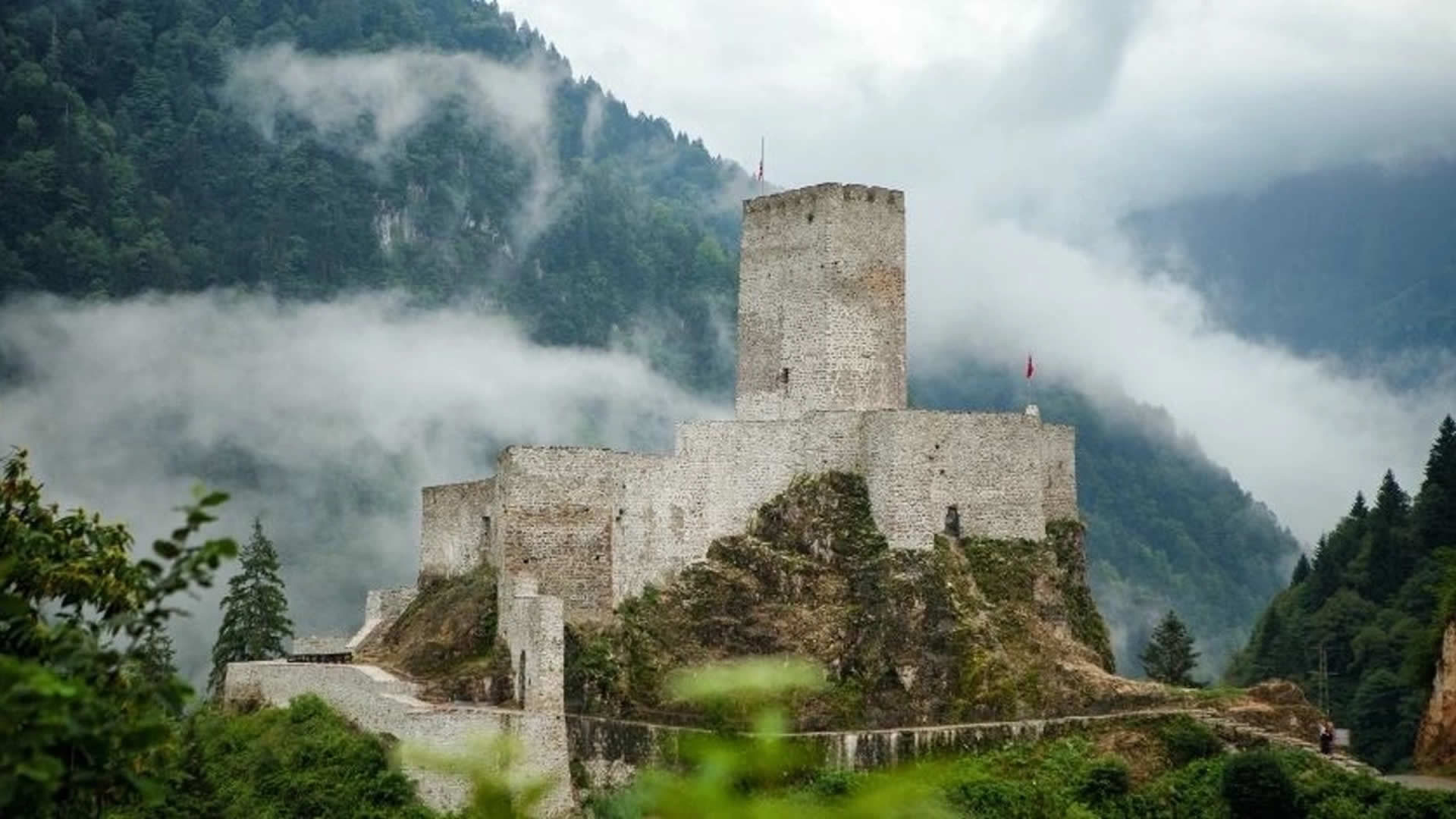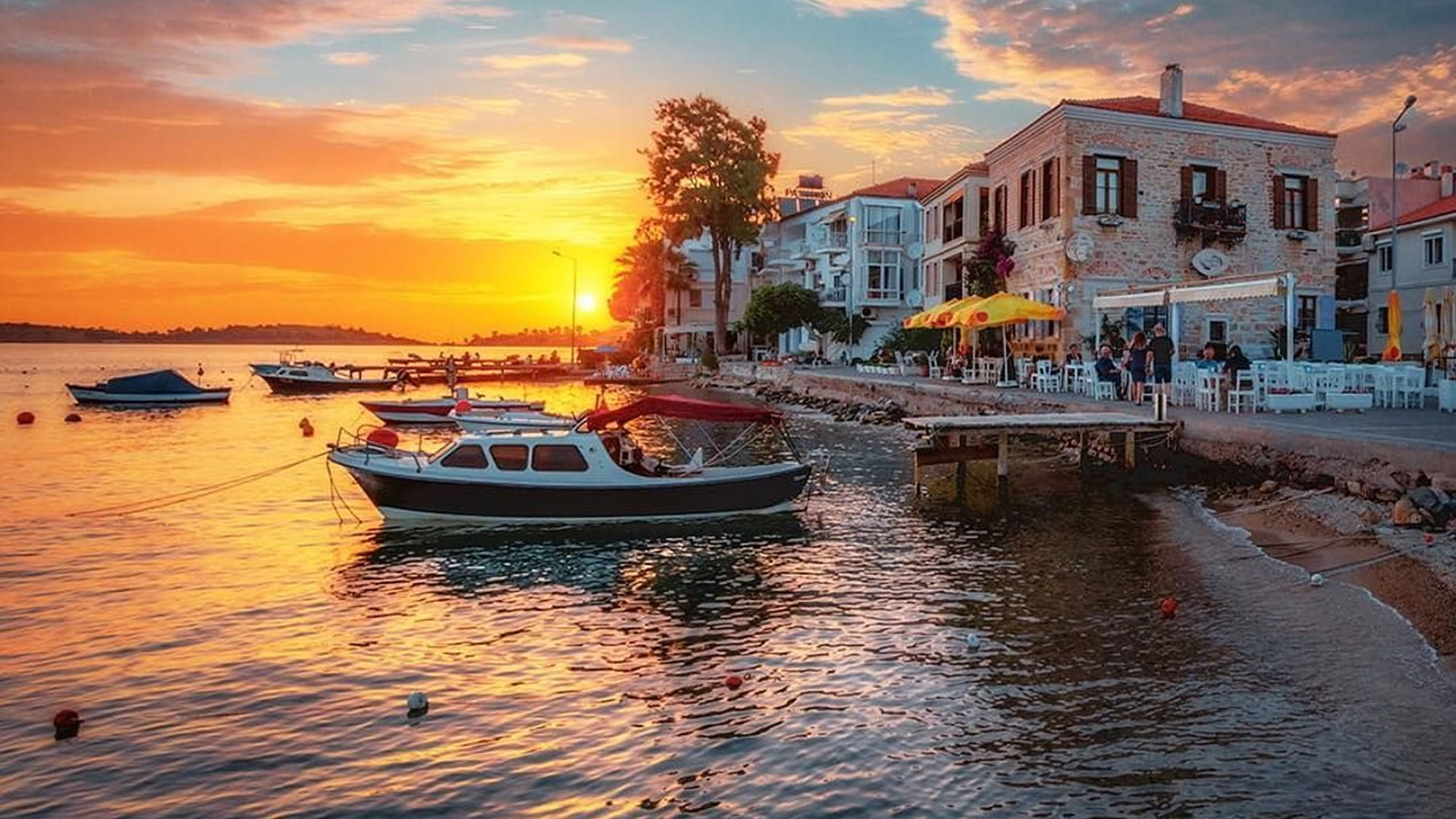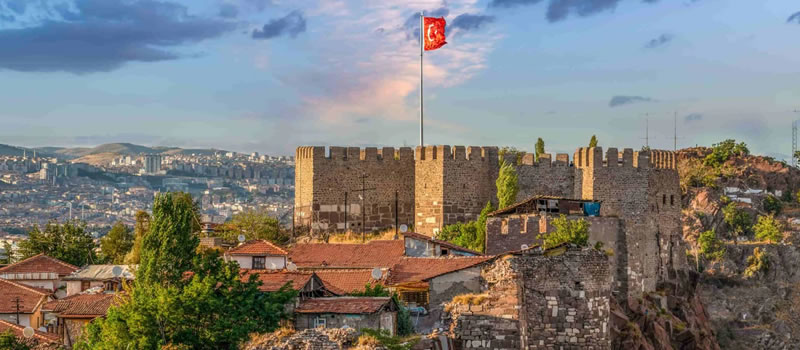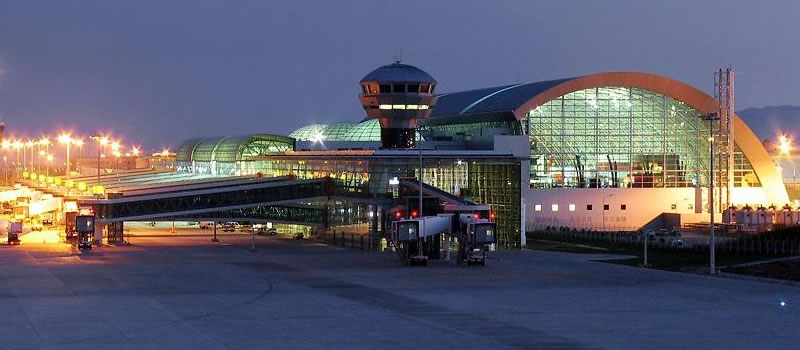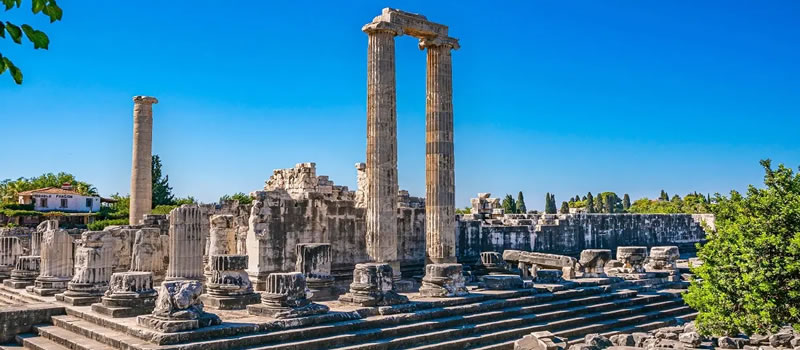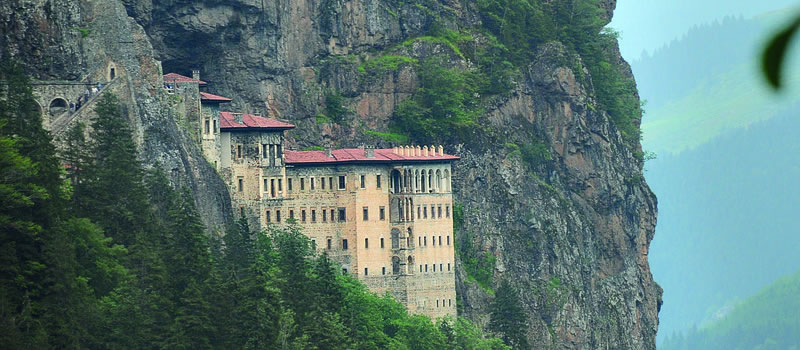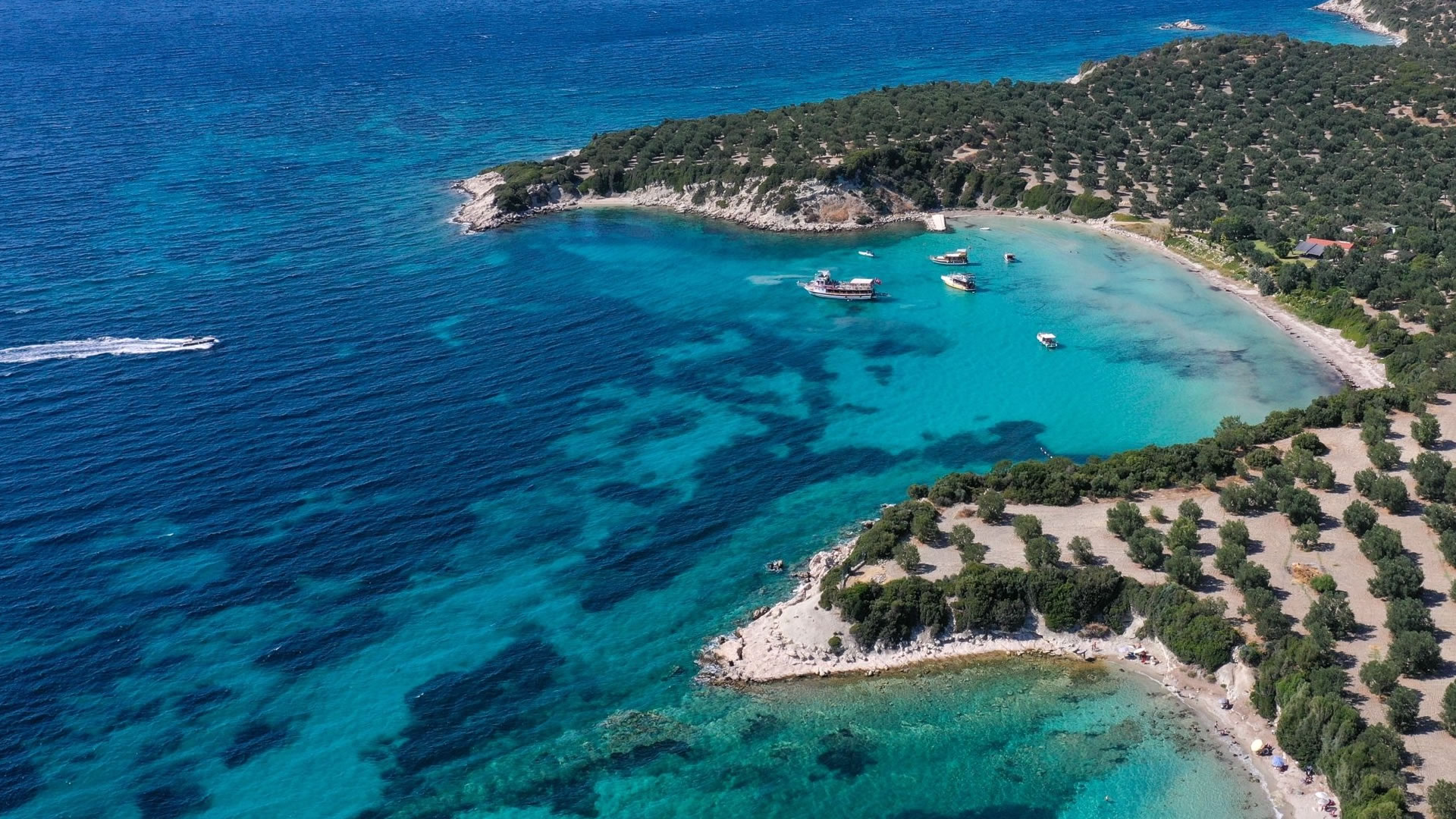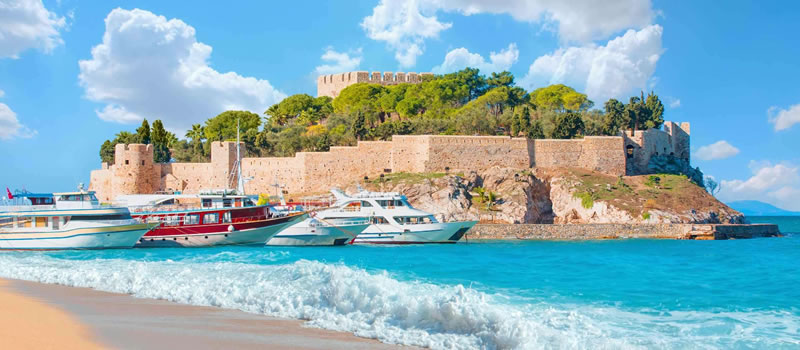Olympos / Antalya
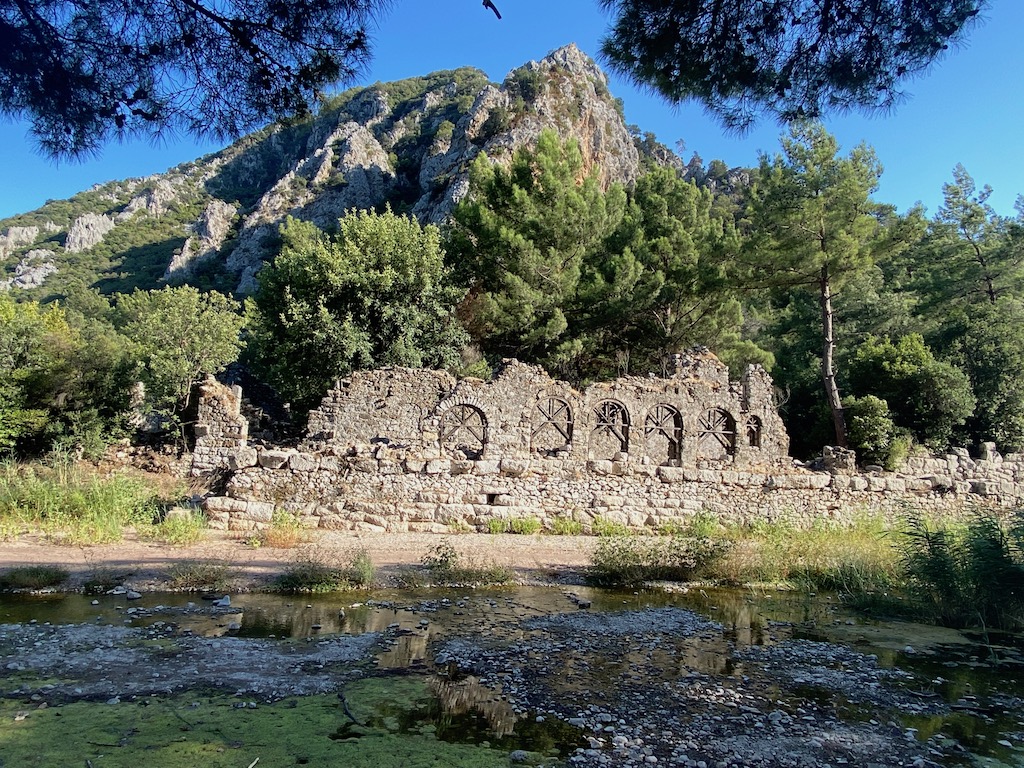
On the southern coast of Antalya, the second important port city after Phaselis is Olympos. The city takes its name from Tahtalı Mountain, which is one of the western extensions of the Taurus Mountains, 16 kilometers to the north, with a height of 2 thousand 375 meters. It is within the borders of Beydağları-Olympos National Park. Although the exact date of its foundation is unknown, Olympos, which is mentioned in the Lycian Union coins minted in 167-168 BC, is one of the six cities with three voting rights in the Lycian Union.
On the south shore, the polygonal masonry wall of the Hellenistic Period and the part indicating the Roman and Byzantine repairs next to it can be seen. There are building remains from the late periods in the small and steep acropolis near the river mouth. The small theater with a Hellenistic foundation and Roman repairs on the south bank of the river is in ruins and one side of the entrance is well preserved.
Another important visible structure of the city is the temple gate located 150 meters west of the river mouth. It is understood from the statue base in front of the door that it was built in the name of the Roman Emperor Markus Aurelius (AD 172-173) from the architectural fragments that it belongs to a small temple in the Ionic order. The most interesting among the ruins is the Sarcophagus of Captain Eudomus, which was unearthed during the excavations carried out by the Antalya Museum. The sarcophagus, located in the hollow of the rock right next to the river mouth, is of great importance both in terms of giving the captain's name in the emotional poetic dedication inscription and giving the shape of his ship in the relief of the ship on its long side.
To the east of Olympos, 300 meters from the beach, there is the famous Çıralı settlement with its magnificent beach where the Carettas lay their eggs and the beach dunes where many plants live. A fire constantly erupts from the southern slope of the hill called Çakaltepe, a few kilometers southwest of the city. This natural phenomenon, which is very impressive especially at night, is nothing but the fact that methane gas has reached the earth from the same point for centuries. This natural event is identified with the Chimera Monster, which lives in Lycia and is believed to spew fire from its breath, and in this way, Olympos hosted the Legend of Bellerophontes. It is possible to see the foundations of some structures around the flames and the sacred road, whose original blocks can be seen from time to time, in the area used as the cult center of the blacksmith God Hephaestus and as a religious center in the Roman and Byzantine periods. The Byzantine Church, the inner walls of which are decorated with frescoes, is the most monumental ruin in the area.
On the south shore, the polygonal masonry wall of the Hellenistic Period and the part indicating the Roman and Byzantine repairs next to it can be seen. There are building remains from the late periods in the small and steep acropolis near the river mouth. The small theater with a Hellenistic foundation and Roman repairs on the south bank of the river is in ruins and one side of the entrance is well preserved.
Another important visible structure of the city is the temple gate located 150 meters west of the river mouth. It is understood from the statue base in front of the door that it was built in the name of the Roman Emperor Markus Aurelius (AD 172-173) from the architectural fragments that it belongs to a small temple in the Ionic order. The most interesting among the ruins is the Sarcophagus of Captain Eudomus, which was unearthed during the excavations carried out by the Antalya Museum. The sarcophagus, located in the hollow of the rock right next to the river mouth, is of great importance both in terms of giving the captain's name in the emotional poetic dedication inscription and giving the shape of his ship in the relief of the ship on its long side.
To the east of Olympos, 300 meters from the beach, there is the famous Çıralı settlement with its magnificent beach where the Carettas lay their eggs and the beach dunes where many plants live. A fire constantly erupts from the southern slope of the hill called Çakaltepe, a few kilometers southwest of the city. This natural phenomenon, which is very impressive especially at night, is nothing but the fact that methane gas has reached the earth from the same point for centuries. This natural event is identified with the Chimera Monster, which lives in Lycia and is believed to spew fire from its breath, and in this way, Olympos hosted the Legend of Bellerophontes. It is possible to see the foundations of some structures around the flames and the sacred road, whose original blocks can be seen from time to time, in the area used as the cult center of the blacksmith God Hephaestus and as a religious center in the Roman and Byzantine periods. The Byzantine Church, the inner walls of which are decorated with frescoes, is the most monumental ruin in the area.


